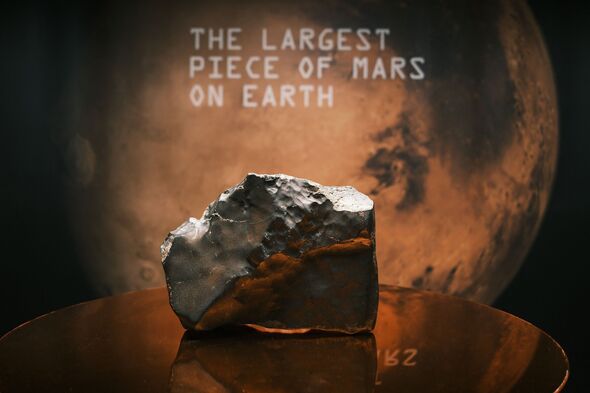A Record-Breaking Martian Meteorite Sells for Over $5 Million
A massive piece of Mars, the largest ever found on Earth, recently sold at an auction in New York for over $5 million. The final bid reached $4.3 million, and with additional fees and costs, the official price was approximately $5.3 million. Despite the high value, the identity of the buyer remains undisclosed.
The meteorite, named NWA 16788, weighs 54 pounds and was discovered in the Sahara Desert in Niger in November 2023. It is believed to have been ejected from the surface of Mars by a powerful asteroid impact. After traveling over 140 million miles through space, it eventually landed on Earth, where it was later identified as a Martian meteorite.
Sotheby’s, the auction house that handled the sale, described the meteorite as 70% larger than the next biggest Martian meteorite ever found on Earth. Only around 400 Martian meteorites have been discovered globally, making this find exceptionally rare.
Cassandra Hatton, vice chairman of science and natural history at Sotheby’s, emphasized the significance of the discovery. “NWA 16788 is a discovery of extraordinary significance — the largest Martian meteorite ever found on Earth, and the most valuable of its kind ever offered at auction,” she stated in a release.
She added, “Weathered by its journey through space and time, its immense size and unmistakable red color sets it apart as a once-in-a-generation find.” The meteorite also provides a tangible link to Mars, a planet that has fascinated humans for centuries.
The rock measures nearly 15 inches by 11 inches by 6 inches. Its surface features a glassy crust formed as it passed through Earth’s atmosphere, which is another unique characteristic. This crust, along with its size and composition, makes the meteorite a highly sought-after specimen among collectors and scientists alike.
Why This Meteorite Is So Valuable
Martian meteorites are incredibly rare, and each one offers valuable insights into the geology and history of Mars. Scientists study these rocks to understand the planet’s composition, volcanic activity, and potential for past life. The size and condition of NWA 16788 make it even more significant, as it is one of the few pieces large enough to provide detailed analysis.
The fact that it was found in the Sahara Desert adds to its story. The desert is known for being a hotspot for meteorite discoveries due to its dry climate and lack of vegetation, which makes it easier to spot extraterrestrial rocks.
Sotheby’s highlighted the meteorite’s visual appeal, noting that its red color and weathered appearance make it stand out. These characteristics are typical of Martian meteorites, which often have a distinctive reddish hue due to iron oxide content.
The Future of Martian Exploration
While this meteorite is now in private hands, its sale underscores the growing interest in space exploration and the scientific value of extraterrestrial materials. As space agencies and private companies like SpaceX continue to push the boundaries of interplanetary travel, the demand for authentic Martian samples is likely to increase.
The sale of NWA 16788 also raises questions about the future of space mining and the commercialization of celestial resources. While current regulations limit such activities, the increasing number of space missions suggests that the legal and ethical frameworks surrounding space resources will need to evolve.
For now, the meteorite remains a symbol of humanity’s enduring fascination with Mars. Its journey from the red planet to Earth, and now to a new home, highlights the incredible connections between our world and the cosmos.
